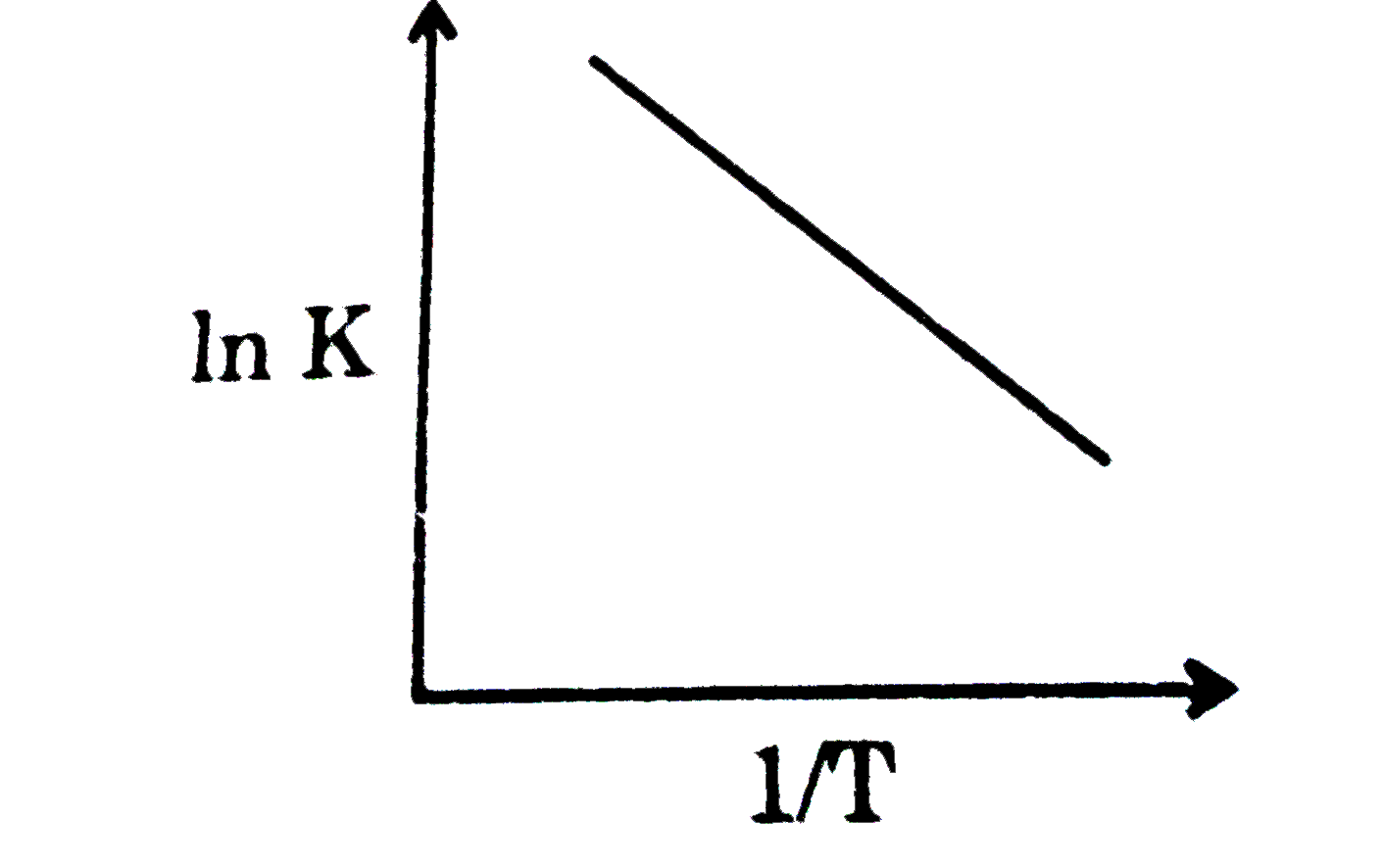For the given reaction A(s)+B(g)↔C(g)+2D(s) reaction quectient at any instant is 0.40 at 300K and 0.60 at 500K then which of the following is correct?
Rate of forward reaction decreases with increase of pressure
Rate of forward reaction increases with decrease of temperature
Rate of backward reaction increases with increase of temperature
Rate of backward reaction decreases with increase of temperature
To solve the question regarding the reaction A(s)+B(g)⇌C(g)+2D(s) and the provided reaction quotients at different temperatures, we can follow these steps:
Step 1: Understand the Reaction Quotient
The reaction quotient Q is defined as:
Q=(C)(D)2(B)
where (C) and (D) are the concentrations of the products and (B) is the concentration of the reactant. Since A and D are solids, their concentrations do not appear in the expression for Q.
Step 2: Analyze Given Values
We are given:
- Q=0.40 at 300K
- Q=0.60 at 500K
This indicates that as the temperature increases from 300K to 500K, the reaction quotient Q increases.
Step 3: Determine the Direction of the Reaction
An increase in Q with temperature suggests that the equilibrium position shifts towards the products. According to Le Chatelier's principle, if the reaction quotient increases with temperature, it indicates that the forward reaction is favored at higher temperatures.
Step 4: Evaluate the Options
Now we need to evaluate the provided options based on our analysis:
1. Option 1: The rate of forward reaction decreases with an increase in pressure.
- This is not necessarily true as the reaction quotient does not directly relate to pressure in this context.
2. Option 2: The rate of forward reaction increases with a decrease in temperature.
- This is incorrect because we have established that the forward reaction is favored at higher temperatures.
3. Option 3: The rate of backward reaction increases with an increase in temperature.
- This is also incorrect since the forward reaction is favored at higher temperatures.
4. Option 4: The rate of backward reaction decreases with an increase in temperature.
- This is correct. If the forward reaction is favored with an increase in temperature, the backward reaction must decrease.
Conclusion
The correct answer is Option 4: The rate of backward reaction decreases with an increase in temperature.
---
The reaction quotient Q is defined as:
Q=(C)(D)2(B)
where (C) and (D) are the concentrations of the products and (B) is the concentration of the reactant. Since A and D are solids, their concentrations do not appear in the expression for Q.
We are given:
- Q=0.40 at 300K
- Q=0.60 at 500K
An increase in Q with temperature suggests that the equilibrium position shifts towards the products. According to Le Chatelier's principle, if the reaction quotient increases with temperature, it indicates that the forward reaction is favored at higher temperatures.
Now we need to evaluate the provided options based on our analysis:
1. Option 1: The rate of forward reaction decreases with an increase in pressure.
- This is not necessarily true as the reaction quotient does not directly relate to pressure in this context.
2. Option 2: The rate of forward reaction increases with a decrease in temperature.
- This is incorrect because we have established that the forward reaction is favored at higher temperatures.
- This is also incorrect since the forward reaction is favored at higher temperatures.
- This is correct. If the forward reaction is favored with an increase in temperature, the backward reaction must decrease.
The correct answer is Option 4: The rate of backward reaction decreases with an increase in temperature.
Topper's Solved these Questions
Similar Questions
Knowledge Check
- Question 1 - Select One or More
For the reaction N2O4(g)⇔2NO2(g), the value of K is 50 at 400 K and 1700 at 500 K. Which of the following options is correct?
AThe reaction is endothermicBThe reaction is exothermicCIf NO2(g)andN2O4(g) are mixed at 400 K at partial pressures 20 bar and 2 bar respectively, more N2O4(g) will be formed,DThe entropy of the system increases. - Question 2 - Select One
For the given reaction.
2A(s)+B(g)⇔C(g)+2D(s)+E(s)
the degree of dissociation of B was found to be 20% at 300k and 24% at 500 k the rate of backward reactionAincreases with increase in pressure and temperatureBincreases with increases in pressure and decreases in temperatureCdepends on temperature only and decreases with increases in temperatureDincreases with increasing the concentration of B and increasing the temperature - Question 3 - Select One
The Kc for given reaction will be A2(g)+2B(g)⇔C(g)+2D(s)
AK=[C][D]2[A2][B]2BK=[C][A2][B]2CK=[A2][B]2[C][D]2DK=[A2][B]2[C]
For the reaction, N2O4(g)⇔2NO2(g), the value of K is 50 at 400 K and 1700 at 500 K. Which of the following options is/are correct?
View SolutionConsider the following reaction :
2A(s)+3B(g)⇔2C(g)+2D(g)
For given reaction, graph which is followed between ln k and 1/T is:

Which of the following statement(s) is/are incorrect ?View SolutionMass action ratio or reaction quotient Q for a reaction can be calculated using the law of mass actionl,
A(g)+B(g)⇔C(g)+D(g)
Q=[C][D][A][B]
The value of Q decides whether the reaction is at equilibrium or not.
At equilibrium, Q=K
For non-equilibrium process Q≠K
When Q>K, reaction will be favoured in backward direction and when Q<K, it will be favoured in forward direction.
In the following reaction :
2SO2(g)+O2(g)⇔2SO3(g)
The equilibrium is not attained. The rate of forward reaction is greater than that of backward reaction. Thus, which of the following is the correct relation between Kp and Qp?View SolutionFor the reaction,
2NO(g)+Cl2(g)⇔2NOCl(g)
a reaction mixture containing NO(g) and Cl2(g) at partial pressure of 0.373 atm and 0.310 atm at 300 K respectively, is taken. The total pressure of the system at equilibrium was found to be 0.544 atm at 300 K. The value of KC for the reaction,
2NOCl(g)⇔2NO(g)+Cl2(g)
at 300 K would beView Solutionfor a given reaction, rate =k[A][B]2/3 correct option (s) /are:
View Solution

